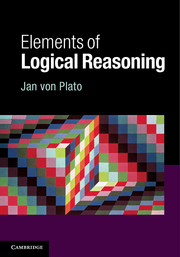The grammar of predicate logic
Predicate logic starts from propositional logic and adds to it two things: The atomic formulas receive an inner structure, and quantifiers are added, one for expressing generality, another for expressing existence.
The structure of the atomic formulas is as follows: We have some given collection of individuals, denoted as a whole by D and called the domain, and individuals in the domain, called objects and denoted by a, b, c,…, a1a2,… etc. Each atomic formula gives a property of the objects in D, or a relation between several such objects. The notation and reading of atomic formulas is exemplified by the following:
P(a), object a has the property P(a)
Q(a, b), objects a and b stand in the relation Q(a, b) to each other
R(a, b, c), objects a, b, and c stand in the relation R(a, b, c) to each other
For a concrete example, let D consist of the natural numbers 0, 1, 2,…, and let P be the property to be a prime number. We can form atomic formulas by writing numbers in the argument place of P, say P(17) that is the proposition 17 is a prime number. Let Q be the order relation < between two natural numbers. Then Q(7, 5) is the proposition 7 is smaller than 5.
